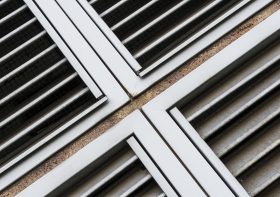10 Ways to Cut Down on Home Servicing and Improvement Costs


Maintaining and improving your home is crucial for comfort, safety, and increasing property value. Although keeping your home in top-notch condition can seem daunting and expensive, there are numerous strategies to cut down on costs. Regular home servicing, smart budgeting, and leveraging DIY projects are just a few ways to save money while ensuring your home remains in excellent shape. With some planning and resourcefulness, you can make your home improvement endeavors less costly and more efficient.
Additionally, understanding when to hire a professional, finding the best deals on materials, and taking advantage of energy efficiency can further reduce your expenses. While some tasks may demand professional involvement, many improvements can be tackled independently to save on labor costs. Learning more about common home maintenance issues and preventive maintenance can also make a significant difference in long-term expenses. You can also explore cost-saving opportunities such as bulk purchasing, using refurbished materials, or taking on smaller projects incrementally. Moreover, adopting eco-friendly practices, like energy-efficient windows or solar panels, can not only reduce energy bills but also qualify for government incentives.
Even keeping a close eye on seasonal sales and contractor promotions can help you find valuable discounts. Planning ahead is key; small, manageable improvements over time can prevent larger, more expensive repairs down the line. Whether it’s routine maintenance or bigger projects like renovations, understanding which tasks you can handle yourself and which ones need professional attention will make a big difference. Learning to recognize the early signs of wear and tear in your home will help you avoid costly repairs in the future. Now, let’s delve into 10 practical ways to cut down on home servicing and improvement costs.
1. Save Money With Regular Maintenance

Regular maintenance is essential for avoiding costly repairs and prolonging the lifespan of your home’s components. Conducting routine inspections and minor repairs can prevent small problems from escalating into major issues. For example, checking your roof for leaks, cleaning gutters, and inspecting the foundation can save substantial sums in the long run.
Specifically, maintaining your heating and cooling service systems is imperative. Regular servicing of HVAC units ensures optimal performance and reduces the chances of unexpected breakdowns, which can be both inconvenient and expensive. By scheduling check-ups at least twice a year, you can catch potential problems early and prolong the life of your system.
Additionally, keeping up with home maintenance tasks like inspecting and caulking windows, lubricating door hinges, and maintaining plumbing systems can prevent larger issues. Adopting a proactive approach to home maintenance not only saves money but also contributes to the overall comfort and safety of your living environment.
2. Consider DIY Projects to Save on Costs
Embracing DIY projects is a fantastic way to cut down on home servicing and improvement costs. By learning a few essential skills, you can handle minor repairs and home enhancements independently, eliminating the need to hire professionals for every task. Simple projects like fixing leaky faucets, tightening loose doorknobs, or patching small drywall holes can be easily managed with a bit of guidance and practice.
House painting is another area where DIY efforts can result in significant savings. Whether it’s an interior room or an exterior wall, tackling painting projects yourself can reduce labor costs considerably. With the right tools, materials, and techniques, you can achieve a professional finish without the hefty price tag of hiring a painter.
Moreover, many resources are available online, such as tutorials and forums, where you can learn new skills and gather tips for various home maintenance tasks. By investing time in improving your DIY abilities, you can handle a broader range of projects and make your home improvement endeavors more cost-effective.
3. Find the Best Deals on Materials
Another way to reduce home servicing and improvement costs is by finding the best deals on materials. Doing some research and comparison shopping can lead to substantial savings on everything from paint and plumbing supplies to flooring and fixtures. Many retailers offer discounts, sales, or bulk-purchase deals that you can take advantage of to lower your expenses.
For residential windows, consider shopping around at various suppliers and comparing prices to get the best value. Look for seasonal sales, clearance items, or even surplus stores where you can find quality windows at reduced prices. Additionally, negotiating directly with suppliers can sometimes result in better pricing, especially if you are purchasing large quantities or undertaking a significant project.
Furthermore, online marketplaces and second-hand stores can be treasure troves for affordable home improvement materials. These platforms often feature gently used or overstocked items sold at a fraction of the original cost. Being resourceful and patient in your search can lead to significant savings and help you stay within your budget.
4. Hire a Professional When Necessary

While DIY projects can save money, there are instances where hiring a professional is the prudent choice. Certain home servicing tasks, such as those involving electrical or structural work, are best handled by experienced professionals to ensure safety and compliance with local building codes. Attempting complex projects without the necessary expertise can result in costly mistakes and potential hazards.
Plumbing services are another area where professional intervention is often recommended. Issues like major pipe leaks, sewer line repairs, or water heater installations require specialized skills and tools that professionals possess. Hiring a reputable plumber for these tasks ensures that the job is done correctly, preventing future complications and additional expenses.
Similarly, structural repairs or installations, such as foundation work, roofing, or major renovations, should be entrusted to professionals. Although hiring experts may seem expensive initially, the long-term benefits of quality workmanship and durability far outweigh the costs. Prioritizing safety and quality in these instances can save money and prevent headaches down the line.
5. Take Advantage of Energy Efficiency to Reduce Costs
Incorporating energy-efficient solutions in your home servicing and improvement projects can lead to significant long-term savings. By improving your home’s energy efficiency, you can reduce utility bills and decrease the wear and tear on heating and cooling systems, thus extending their lifespan. Simple measures like installing programmable thermostats, sealing air leaks, and adding insulation can make a huge difference.
Enlisting the help of a local electrician company to upgrade your home’s electrical system can also contribute to energy efficiency. Upgrading to energy-efficient appliances, LED lighting, and smart home systems can lower electricity consumption and reduce your overall energy costs. The initial investment in these upgrades is often offset by the savings realized over time.
Additionally, utilizing renewable energy sources, such as solar panels, can further decrease your dependence on traditional energy sources and lower your utility bills. Many governments and utility companies offer incentives and rebates for solar installations, making it a viable option for cost-conscious homeowners. Exploring these energy-efficient solutions can lead to substantial financial benefits and a more sustainable home.
6. Look Into Low-Cost Home Improvement Ideas
Exploring low-cost home improvement ideas can lead to significant savings without compromising on aesthetics or functionality. Simple yet impactful changes like updating fixtures, adding a fresh coat of paint, or rearranging furniture can rejuvenate your living spaces without breaking the bank. These minor upgrades can make a big difference in the overall look and feel of your home.
For those with swimming pools, maintaining your own pool can be a cost-effective option. Pool maintenance tasks, such as cleaning, balancing chemicals, and checking filters, can be done independently with the right knowledge and tools. Taking charge of pool maintenance not only saves money but also ensures that your pool remains in pristine condition throughout the year.
Outdoor enhancements, like landscaping or adding a garden, can also improve your home’s curb appeal without incurring high costs. Planting native plants, creating a small vegetable garden, or installing outdoor lighting are budget-friendly improvements that can significantly enhance your outdoor spaces. These low-cost ideas contribute to a more inviting and enjoyable home environment.
7. Budget Well for Servicing Your Home

Careful budgeting is essential for managing home servicing and improvement costs effectively. Creating a detailed budget helps you prioritize essential projects and allocate funds accordingly. By estimating the costs of materials, labor, and unforeseen expenses, you can ensure that you stay within your financial limits and complete your projects without financial strain.
When planning for home care, consider allocating a portion of your budget for routine maintenance and emergency repairs. Regularly setting aside funds for these purposes ensures that you are prepared for unexpected issues and can address them promptly. This proactive approach minimizes financial stress and keeps your home in good condition.
Additionally, researching and obtaining quotes from multiple asphalt paving companies or other service providers can help you find competitive pricing for your projects. Comparing different contractors and negotiating effectively can lead to cost savings and better value for your money. Staying informed and organized in your budgeting efforts ensures that your home maintenance expenditures are manageable and efficient.
8. Consider the Benefits of Preventive Maintenance
Investing in preventive maintenance is a crucial strategy for reducing long-term home servicing costs. Addressing potential issues before they become major problems can save significant money and prevent costly repairs. Regularly inspecting and maintaining key components of your home, such as the roof, plumbing, and HVAC systems, is a proactive approach that pays off in the long run.
Engaging the services of a local garage door service for routine inspections and maintenance can prevent unexpected malfunctions and extend the life of your garage door. Checking for wear and tear, lubricating moving parts, and ensuring proper alignment are simple preventive measures that can avoid the need for expensive repairs or replacements.
Similarly, scheduling periodic maintenance for your home’s plumbing, electrical, and foundation systems can address minor issues before they escalate. Preventive maintenance not only saves money but also boosts the overall efficiency and safety of your home. Embracing this proactive approach ensures that your home remains in excellent condition and reduces the likelihood of significant repair expenses.
9. Negotiate with Contractors Effectively
Effective negotiation with contractors can lead to substantial savings on home servicing and improvement projects. When hiring professionals, obtain multiple quotes and compare them to find the best value. Clearly communicate your budget and expectations, and be open to discussing potential cost-saving options without compromising on quality.
For instance, when engaging tree companies for services like pruning or removal, inquire about different packages or off-season discounts. Contractors may be willing to offer lower rates during slower periods or for bundled services. Being flexible and negotiating can result in more favorable pricing and better service.
Additionally, building a good rapport with contractors and understanding the scope of work can lead to better deals. Demonstrating your willingness to work collaboratively and providing clear information about your requirements can encourage contractors to offer competitive pricing. Effective negotiation ensures that you get the best possible value for your home maintenance investments.
10. Learn More About Servicing Your Home

Continuously educating yourself about home servicing can empower you to make informed decisions and save money. Understanding common issues, maintenance requirements, and improvement techniques allows you to tackle tasks confidently and avoid unnecessary expenses. Numerous online resources, workshops, and books provide valuable insights into various aspects of home maintenance and improvement.
For instance, gaining knowledge about how a foundation company and its services can help you identify early signs of foundation problems and seek timely interventions. Knowing when to call professionals and what to expect from their services ensures that you make well-informed choices and avoid overpaying.
Additionally, staying updated on industry trends, new technologies, and cost-saving techniques can further enhance your home servicing efforts. Engaging with online communities or attending local home improvement events can provide practical tips and advice. Being proactive in learning about home care empowers you to manage your home efficiently and cost-effectively.
There are numerous ways to cut down on home servicing and improvement costs while maintaining the quality and integrity of your home. Regular maintenance, embracing DIY projects, finding the best deals on materials, and knowing when to hire professionals are key strategies. Additionally, taking advantage of energy efficiency, exploring low-cost improvement ideas, budgeting effectively, and investing in preventive maintenance can lead to significant savings.
Effective negotiation with contractors and continuous learning about home servicing further enhance your ability to manage costs. By adopting these practical approaches and being proactive in your home maintenance efforts, you can enjoy a well-maintained home without incurring exorbitant expenses.


